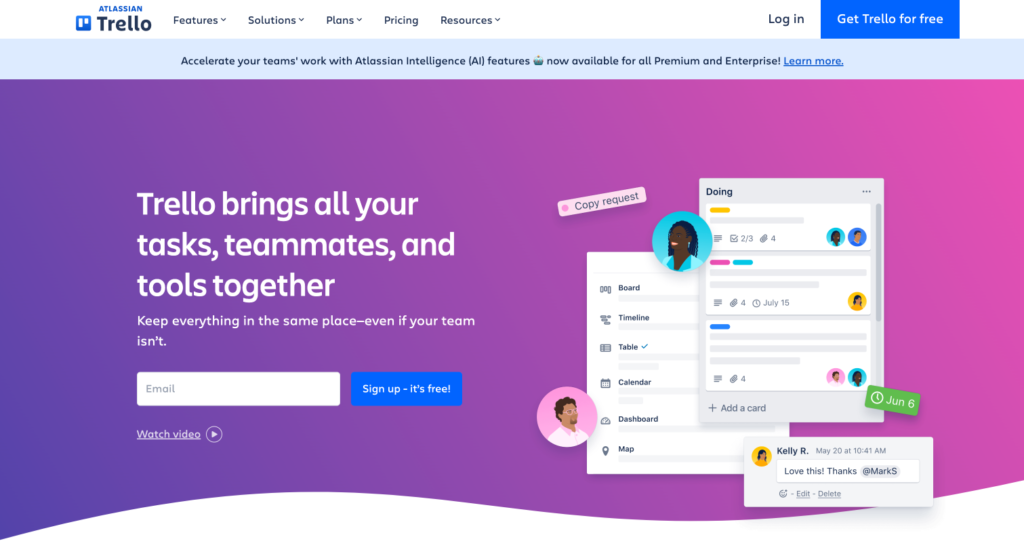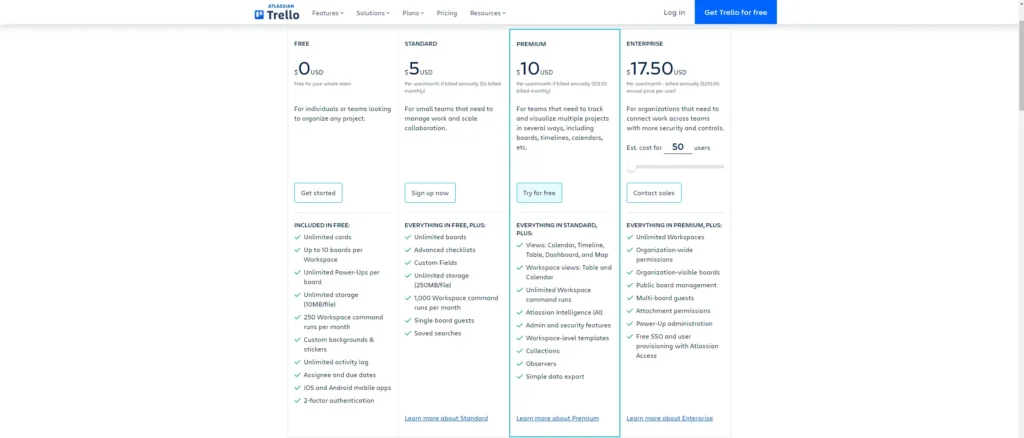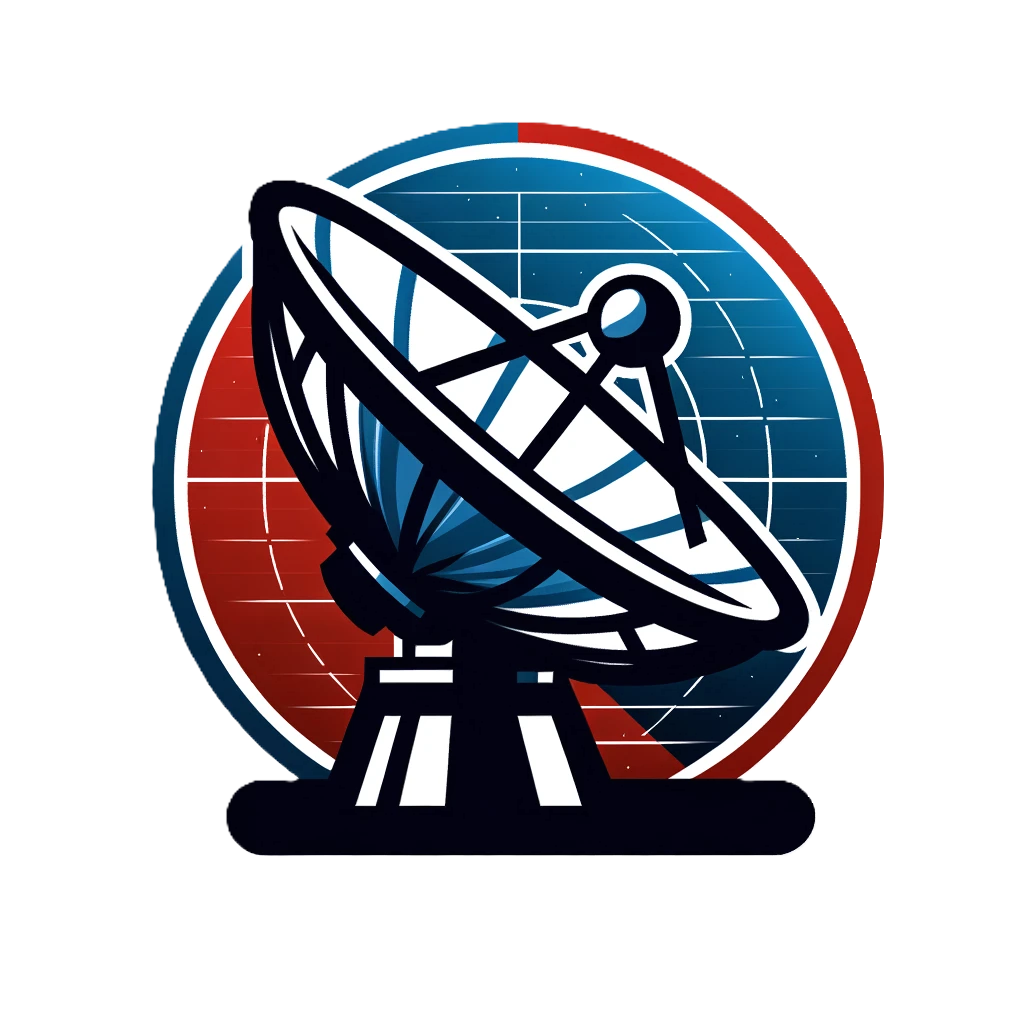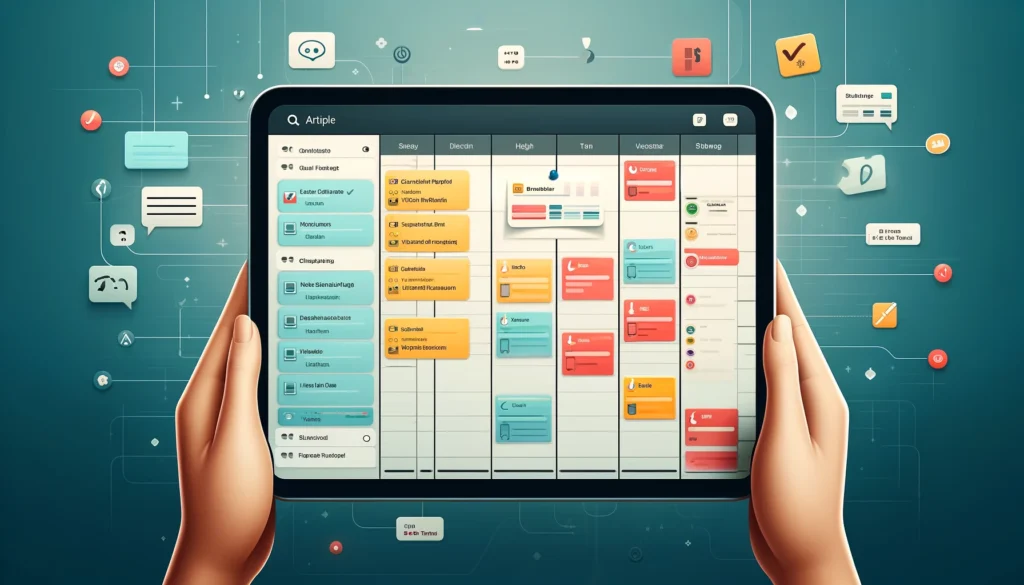In the fast-paced world of project management, finding a tool that can streamline processes, enhance collaboration, and adapt to various team needs is crucial. Enter Trello, a visual project management software that has gained immense popularity since its launch. Known for its intuitive interface and versatile capabilities, Trello has become a favorite among businesses, freelancers, and educators alike. Its card-and-board system revolutionizes how teams organize tasks, making project management not only efficient but also visually engaging.
By the end of this Trello software review, you’ll have a clear understanding of Trello’s strengths, areas for improvement, and whether it remains a top contender in the crowded field of project management tools. Let’s dive into the Trello software review for 2024 and discover how it can empower your team to achieve more, with less hassle.
Overview of Trello

History and Background of Trello
Trello, a project management tool developed by Fog Creek Software (now Glitch), was launched in 2011. The brainchild of Joel Spolsky and Michael Pryor, Trello was designed to address the challenges of managing projects visually and intuitively. In 2017, Trello was acquired by Atlassian, a global leader in software development and collaboration tools, which helped it expand its feature set and integrate with a broader ecosystem of tools. Over the years, Trello has maintained its core philosophy of simplicity and user-friendliness while continually evolving to meet the needs of diverse teams and projects.
Basic Functionalities and Use Cases
Trello’s foundation lies in its card-and-board system, which mimics a physical whiteboard covered in sticky notes. Users create boards for various projects, and within those boards, they can add lists that represent stages of a project or different categories of tasks. Each list contains cards, which are individual tasks or items that can be moved across lists to indicate progress. This system is not only intuitive but also highly flexible, allowing users to adapt it to virtually any workflow.
Key functionalities of Trello include:
- Drag-and-Drop Interface: Easily move cards between lists to represent task progress.
- Card Customization: Add descriptions, checklists, due dates, attachments, and comments to cards.
- Labels and Filters: Categorize and prioritize tasks with color-coded labels and use filters to focus on specific cards.
- Power-Ups: Enhance boards with integrations (e.g., Slack, Google Drive) and additional features (e.g., calendar view, voting).
- Collaboration Tools: Mention teammates in comments, assign cards, and track activity logs to stay aligned.
Types of Users and Industries Benefiting from Trello
Trello’s versatility makes it a valuable tool across various industries and for different types of users:
- Businesses and Corporations: Teams use Trello to manage projects, track progress, and collaborate across departments. It is particularly popular in tech companies, marketing agencies, and startups due to its flexibility and integration capabilities.
- Freelancers and Small Businesses: Individuals and small teams benefit from Trello’s user-friendly interface and affordable pricing, using it to manage client projects, deadlines, and deliverables.
- Education: Teachers and students utilize Trello for classroom projects, assignment tracking, and collaborative learning activities.
- Nonprofits: Organizations manage volunteer activities, event planning, and fundraising campaigns with Trello’s easy-to-use platform.
- Personal Use: Individuals employ Trello for personal productivity, such as organizing daily tasks, planning vacations, and managing household projects.
In summary, Trello’s history of innovation and its adaptable functionalities have solidified its reputation as a premier project management tool. Whether for business, education, or personal use, Trello continues to be a versatile solution that caters to a wide array of project management needs. This Trello software review aims to delve deeper into these aspects and assess how Trello stands out in 2024.
Trello New Features in 2024
Overview of New Features Introduced in 2024
In 2024, Trello has introduced several exciting new features aimed at enhancing productivity and collaboration. These updates are designed to address user feedback and keep pace with the evolving demands of project management. Let’s delve into the standout features that Trello has rolled out this year.
Detailed Description of Each New Feature
- Advanced Reporting and Analytics
- Description: Trello now offers advanced reporting and analytics tools that provide deeper insights into project progress, team performance, and task completion rates. Users can generate customizable reports, visualize data with interactive charts, and track key metrics over time.
- Enhancement: This feature helps teams make data-driven decisions, identify bottlenecks, and improve overall efficiency.
- Enhanced Automation with Butler 2.0
- Description: Butler, Trello’s automation tool, has been upgraded to Butler 2.0. It now includes more sophisticated automation capabilities, such as conditional logic, multi-step workflows, and integration with third-party apps like Zapier.
- Enhancement: Butler 2.0 reduces manual effort, allowing teams to automate repetitive tasks and streamline complex workflows, thereby saving time and reducing errors.
- Real-Time Collaboration Tools
- Description: Trello has introduced new real-time collaboration features, including live editing, inline comments, and video conferencing integration. Users can now see changes as they happen and communicate more effectively within the platform.
- Enhancement: These tools foster better teamwork, reduce delays in communication, and ensure everyone is on the same page, making remote collaboration seamless.
- Advanced Security Features
- Description: In response to growing concerns about data security, Trello has implemented advanced security features such as two-factor authentication (2FA), granular permission settings, and enhanced encryption protocols.
- Enhancement: These features provide users with greater control over their data and ensure that sensitive information is protected, enhancing trust and compliance.
- Improved Mobile App Experience
- Description: The Trello mobile app has been significantly revamped to offer a more intuitive and responsive user experience. New features include offline mode, enhanced push notifications, and a redesigned interface that mirrors the desktop experience.
- Enhancement: These improvements ensure that users can stay productive and connected on the go, with a consistent experience across all devices.
How These New Features Enhance User Experience
The new features introduced in 2024 collectively enhance the user experience by making Trello more powerful, intuitive, and secure. Advanced reporting and analytics empower users with actionable insights, while enhanced automation reduces manual tasks, freeing up time for more strategic work. Real-time collaboration tools and a revamped mobile app facilitate seamless communication and productivity, regardless of location. Enhanced security features ensure peace of mind, allowing users to focus on their projects without worrying about data breaches.
Trello Integration and Automation
Integration Capabilities with Other Tools
Trello’s integration capabilities are one of its standout features, allowing users to connect Trello with a wide range of other tools to create a seamless workflow. Some key integrations include:
- Slack: Users can link Trello boards to Slack channels, enabling automatic notifications of Trello activity within Slack. This integration enhances team communication and keeps everyone updated on project’s progress.
- Google Drive: Integration with Google Drive allows users to attach files directly from Drive to Trello cards, ensuring that important documents are easily accessible and organized within the project.
- Microsoft Teams: Trello’s integration with Microsoft Teams enables users to manage their Trello boards within the Teams interface, facilitating collaboration and task management without switching platforms.
- Other Tools: Trello integrates with numerous other tools, including Jira, Dropbox, Evernote, and more, expanding its functionality and fitting seamlessly into existing workflows.
Automation Features Like Butler
Butler, Trello’s built-in automation tool, significantly enhances productivity by automating repetitive tasks and workflows. In 2024, Butler 2.0 will introduce advanced automation capabilities:
- Conditional Logic: Users can create rules that trigger specific actions based on conditions, such as moving cards when due dates are approaching or assigning tasks based on card labels.
- Multi-Step Workflows: Butler allows users to automate complex workflows involving multiple steps, reducing the need for manual intervention and ensuring consistency.
- Integration with Third-Party Apps: Butler can now interact with external applications through integrations like Zapier, further extending its automation capabilities.
These automation features save time, reduce errors, and ensure that tasks are completed consistently and efficiently.
Benefits of Integrating Trello into Existing Workflows
Integrating Trello into existing workflows offers numerous benefits:
- Streamlined Processes: Integrations and automation reduce the need for manual data entry and task updates, making processes more efficient.
- Enhanced Collaboration: Integrating Trello with communication tools like Slack and Microsoft Teams improves team collaboration and keeps everyone aligned.
- Centralized Information: By connecting Trello with document storage solutions like Google Drive, all project-related information is centralized in one accessible location.
- Improved Productivity: Automation features like Butler free up time for team members to focus on high-value tasks, improving overall productivity and project outcomes.
Overall, Trello’s integration capabilities and powerful automation tools make it a versatile and efficient project management solution, enabling teams to work smarter and achieve their goals more effectively.
Trello Pricing and Plans
Overview of Trello’s Pricing Structure

Trello offers a tiered pricing structure designed to accommodate different user needs, ranging from individuals and small teams to large enterprises. In 2024, Trello’s pricing plans are as follows:
- Free Plan: Basic functionality for individuals or small teams looking to manage personal tasks or simple projects.
- Standard Plan: Priced at $5 per user per month, billed annually, offering enhanced features for small teams, including unlimited boards, advanced checklists, and custom fields.
- Premium Plan: Priced at $10 per user per month, billed annually, tailored for larger teams that require more robust project management tools, such as timeline view, dashboard view, and advanced admin controls.
- Enterprise Plan: Custom pricing for organizations with advanced security needs and extensive team management features, including organization-wide permissions and priority support.
Comparison of Free vs. Premium Plans
Free Plan:
- Basic boards, lists, and cards.
- Limited Power-Ups (one per board).
- Basic automation with Butler.
- Unlimited cards and up to 10 boards per workspace.
- Simple task management features suitable for personal use or small projects.
Premium Plans (Standard and Premium):
Standard Plan:
- Unlimited boards within a workspace.
- Advanced checklists with due dates and assigned members.
- Custom fields for cards, providing more detailed tracking.
- Unlimited Power-Ups per board, enhancing functionality.
- Priority support.
Premium Plan:
- Includes all features from the Standard Plan.
- Additional views (timeline, calendar, map, and dashboard).
- Advanced admin controls and security features.
- Workspace-level templates and unlimited automation commands with Butler.
- Enhanced reporting and analytics tools.
Enterprise Plan:
- All Premium Plan features plus:
- Organization-wide security controls and permissions.
- Advanced user management and priority support.
- Custom billing and dedicated account management.
Conclusion
Trello continues to be a leading project management tool in 2024, building on its reputation for simplicity, flexibility, and user-friendliness. The platform’s core features-intuitive boards, lists, and cards-remain as effective as ever for organizing tasks and projects. New features introduced this year, such as advanced reporting and analytics, Butler 2.0 automation, and enhanced real-time collaboration tools, significantly enhance Trello’s functionality and user experience.
The revamped mobile app ensures that productivity is not confined to the desktop, and advanced security measures provide peace of mind for users concerned about data protection. Trello’s seamless integration with a variety of third-party tools and its robust support options further solidify its position as a versatile and reliable project management solution.
Try Trello today to experience firsthand how it can transform your workflow, boost your team’s productivity, and make project management a more enjoyable and efficient process. With a free plan available and the option to upgrade as your needs grow, Trello offers a flexible and accessible solution for anyone looking to streamline their project management.

